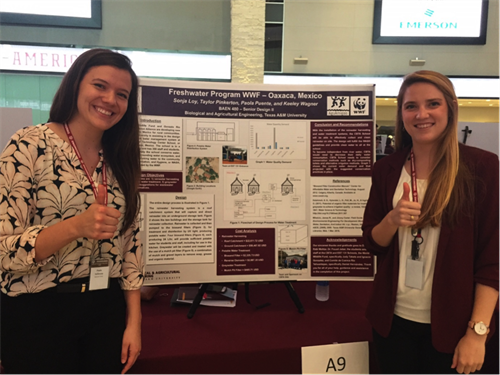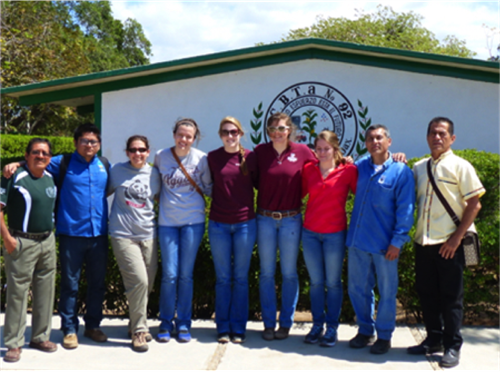A team of Texas A&M University engineering students spent its semester working to provide safer, cleaner drinking water for rural communities in Mexico. The students were paired with the World Wildlife Fund (WWF) and the Gonzalo Rio Arronte Foundation to improve water quality without creating complications for wildlife as part of a biological and agricultural engineering global design team (GDT) course.
“Being able to travel to Oaxaca and work with the WWF in Mexico really opened my eyes to their culture and to their way of life,” said Keeley Wagner, a team member from the GDT project. “It is so rich and different from our own that you have to visit in order to truly experience it and appreciate it. There are many in Oaxaca and around the world that do not have access to clean water, sanitation systems, and sturdy homes, and we can help them in many ways if only we put in the time and effort.”

The WWF requested assistance in designing and implementing inexpensive technologies for wastewater treatment and improving water quality in the Copalita-Zimatán-Huatulco (CZH) river area of Mexico. By the end of the semester, the team provided specifications, manuals and reports for a rainwater harvesting system and effective filtration method as well as suggestions for wastewater management alternatives.
“Since entering university, I have wanted to help people worldwide with their water conservation and sanitation needs,” said Sonja Loy, a team member from the Mexico GDT project. “This project really let me see and experience a practical way that this desire can be realized in my future studies and vocation.”
The Texas A&M biological and agricultural engineering GDT course spans the academic year to provide real-world engineering challenges from the private and public sectors. Global design teams, which are part of a biological and agricultural engineering capstone course, have three to five students per team who work with their sponsors to develop practical solutions to proposed challenges. The goal of GDT is to address specific challenges within the community for mutual benefit while working together.
The projects are real world, full-cycle design experiences in which teams travel to their project site whether in Texas or abroad to work on the design and foster global awareness. Through utilizing the technical skills and competencies of the students, employees and volunteers involved in each project, a sustainable solution can be achieved.
Projects are selected based on the relevance of community-identified needs and their ability to offer the students a creative, effective sustainable problem solving opportunity. Quality control, accountability measures, logistics and financial and engineering support are all provided and monitored to ensure project success. Support is provided by the partner organizations, Texas A&M and the students themselves. Global design teams offer experiential, hands-on learning that develops skills useful for future careers, family life and community. Students and community partners give and receive time, energy, knowledge and creativity while accomplishing the requirements of their senior capstone.
“These experiences meet the capstone design criteria we seek, provide the environment for service learning which makes engineering more relevant to society and allow engagement with real world problems,” said Dr. Rabi Mohtar, a Texas A&M Engineering Experiment Station endowed professor in the biological and agricultural and civil engineering departments. “They also provide global learning opportunities and help bridge cross-cultural barriers, thus providing a holistic experience and enhanced technical, personal and professional skills.”

The Mexico water project is just one of nine projects that are part of the 2016 GDT course. The other projects included a mobile unit for remote sample collection for the San Antonio River Authority; a low cost, locally sourced off-grid system for improved water quality and heavy metal removal for Progressive Vellore, India; crop layouts and irrigation installation plans for community supported agriculture; a streamlined process to maximize profits for cardamom post-harvest processing in Guatemala; sustainable, an effective and budget-friendly storm water mitigation plan for a Texas community; an effective, cost-efficient water storage and distribution system in Nicaragua; an improved design, operation and maintenance plan for a small wastewater treatment facility in Ecuador; and an environmentally friendly, natural food-growing method combining the best attributes of aquaculture and hydroponics, wasting no water and adding no chemical fertilizers.
For information about sponsoring a global design team, contact GDT@tamu.edu.